 Deterring birds requires a multi-sensory approach that repels them by sight, smell and touch. Sometimes nets and spikes aren’t practical. The goal many facilities managers are tasked with can seem overwhelming, even impossible: get rid of a variety of birds without harming them. To accomplish this, the key is to alter the birds’ behavior without using a physical barrier.
Deterring birds requires a multi-sensory approach that repels them by sight, smell and touch. Sometimes nets and spikes aren’t practical. The goal many facilities managers are tasked with can seem overwhelming, even impossible: get rid of a variety of birds without harming them. To accomplish this, the key is to alter the birds’ behavior without using a physical barrier.
Optical Gel, a product by California-based Bird Barrier, is one way pest management professionals (PMPs) can do this. Birds will completely desert a habitat — even one they have been using for years — because of a multi-sensory approach that disorients. Birds are disoriented by:
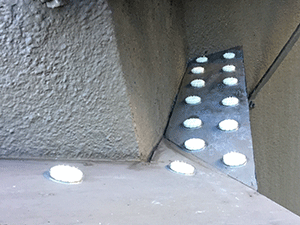
- Sight. Birds have ultraviolet receptors that see fire or smoke, even though there isn’t any with Optical Gel. Humans, meanwhile, see nothing at all.
- Smell. A blend of peppermint oil and citronella is proven to emit a smell that is offensive to birds, but quite pleasant to humans.
- Touch. The gel properties make Optical Gel sticky if the birds do touch it.
By understanding how to apply and where to apply Optical Gel, you can help your customers make bird management a quick and easy task, much like the customers we talked to in our case studies.
Bird Barrier’s small gel dish can be the exact right tool needed when pest management professionals need to deter birds from structures where appearances matter or structures with tight, hard-to-reach places.
How to apply Optical Gel
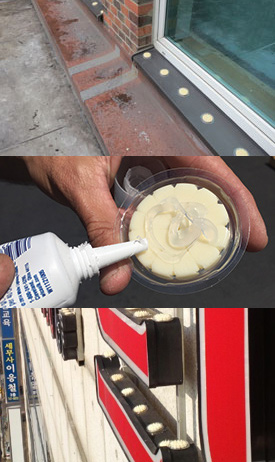 Thoroughly clean the site first. If birds have already claimed the area as a home, remove all nests, pressure wash and sanitize with a 10 percent bleach solution. And of course, always wear personal protective equipment when cleaning. The gel trays can be used in conjunction with netting and spikes, but are especially useful in places where mechanical deterrents aren’t practical.
Thoroughly clean the site first. If birds have already claimed the area as a home, remove all nests, pressure wash and sanitize with a 10 percent bleach solution. And of course, always wear personal protective equipment when cleaning. The gel trays can be used in conjunction with netting and spikes, but are especially useful in places where mechanical deterrents aren’t practical.
- Determine your placement on ledges, pipes, signs, roof peaks and similar locations. For heavy pressure sites, space every 6 inches for nests and every 8 inches for nighttime roosts. On an open ledge, install one inch back from the edge and 10 inches apart. At only 2.5 inches in diameter and 0.875 of an inch tall, the dishes are discreet enough for use in even visible areas.
- Secure Optical Gel to the surface with a small dab of silicone. Dishes are pre-loaded and with firm density, the gel won’t run, even when mounted upside down.
- For gull sites, check on the installation every few days for the first two weeks and amend installations accordingly. Gulls are adaptive, so you’ll want to be, too.
- Replace in 2 to 4 years. As long as the area was thoroughly cleaned first, Optical Gel has years of effectiveness, with no maintenance required. It doesn’t get much easier.
Where to apply Optical Gel
Optical Gel is resistant to high and low temperatures, rain and snow. Utilizing all organic ingredients, it is a Minimum Risk Pesticide, FIFRA Exempt. Sold in packs of 24, Optical Gel can be applied to:
- AC equipment
- Balconies
- Beams
- Cable Runs
- Chimneys
- Enclosed spaces*
- HVAC Equipment
- Ledges
- Parapet Caps
- Roofs
- Signs
- Skylights
- Small Openings
- Soffits for Mud Swallows
- Speakers
- Steel Beams
- Vertical Surfaces for Woodpeckers
- Window Sills
*Optical Gel’s organic formulation means consumers don’t need to be concerned about the product’s effect on air quality or contact to skin.
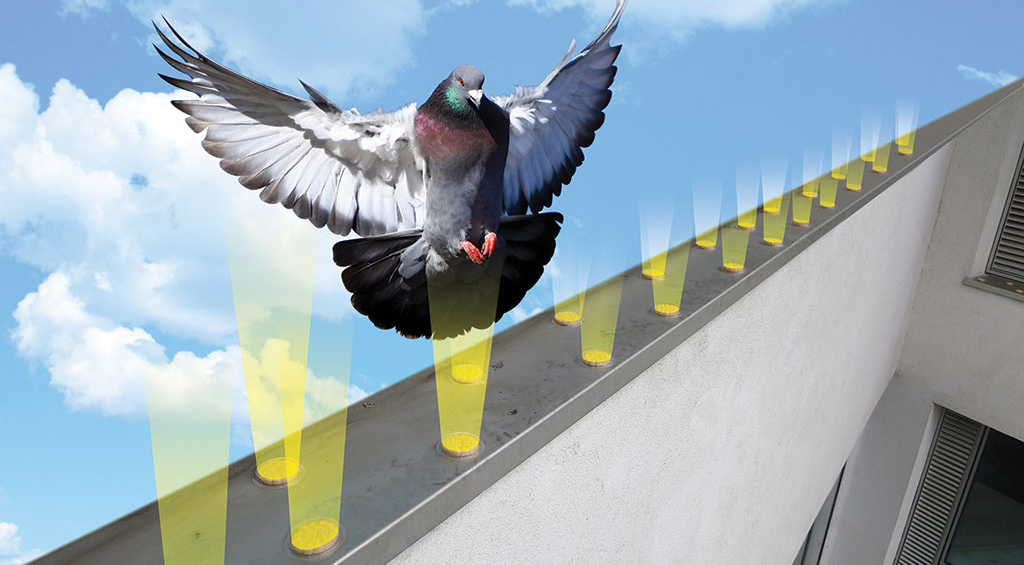
Case Studies: Optical Gel — Put to the test
Case Study #1: Newly renovated Renaissance Hotel maximizes bird control
Eliminating pigeons where appearances matter

Travis Morgan, lead installer at United Bird Control
The Renaissance Hotel in downtown Phoenix underwent a 6-month renovation. A critical part of this renovation involved pigeon control.
 The hotel had experienced pigeon issues for several years, and management decided to fix this problem during the renovation. Bird Barrier worked with the construction company to find the best bird control solution for each part of the renovation project. The company used several bird deterrent methods, including netting, portable fence bird spikes, posts and wire on different parts of the hotel.
The hotel had experienced pigeon issues for several years, and management decided to fix this problem during the renovation. Bird Barrier worked with the construction company to find the best bird control solution for each part of the renovation project. The company used several bird deterrent methods, including netting, portable fence bird spikes, posts and wire on different parts of the hotel.
For some parts of the hotel, it was important that the bird deterrents were not visible from the outside, for aesthetic reasons.
That is where Optical Gel came into the picture. The pre-dosed gel dish sticks to buildings and repels birds using several deterrents.
“For some parts, there were concerns the aesthetics would be compromised. With Optical Gel, there is no appearance on the exterior. The dishes can be applied on the surfaces and are invisible from below.”
— Ted Lafforthun, project manager
The crew installed 400 Optical Gel dishes on multiple areas of the building, including the valet parking cover, the steel portal roll-up doors for shops and restaurants, and a ledge at the top of the hotel.
“Once we installed the Optical Gel canisters, there were zero birds and zero proof that we were there,” Lafforthun added. “When we did the walk-around with the owner, he was delighted with the bird control solutions we provided.”

Case Study #2: National chain solves troublesome pigeon problem
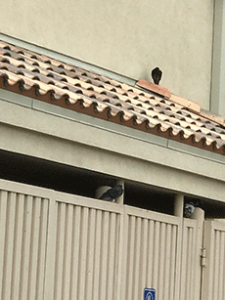
A pigeons rests under the store’s eaves.
Deterring birds from hard-to-reach areas
A national pharmacy chain was experiencing pigeon issues on gates that enclosed the dumpsters at the rear of the store.
Pigeons were roosting along the tops of the doors and walls, as well as under the store’s eaves.
Paul Sowers, the West/Central regions manager of Carter Services Inc. used Bird Barrier’s Optical Gel to solve the problem. He cleaned the pigeon droppings off the ledges and door tops and placed the Optical Gel dishes in 10-in. intervals using silicone.
“After I was done, I sat in my truck and watched pigeon after pigeon try to fly up and go onto the ledges, and they just flew away,” Sowers said.
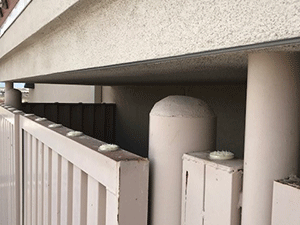 Optical Gel is a versatile product that can last two to four years, depending on environment.
Optical Gel is a versatile product that can last two to four years, depending on environment.
“It’s a great tool for a pest controller’s arsenal and a revolutionary product. Netting and bird spikes are still a great long-term solution. However, there are instances where those are not an option and Optical Gel is better.”
— Paul Sowers, West/Central regions manager of Carter Services Inc.
For more information on Optical Gel, visit BirdBarrier.com or call Bird Barrier at 800-NO-BIRDS (800-662-4637).
This page was produced by North Coast Media’s content marketing staff in collaboration with Bird Barrier. NCM Content Marketing connects marketers to audiences and delivers industry trends, business tips and product information. The Pest Management Professional editorial staff did not create this content.
Photos provided by Bird Barrier.